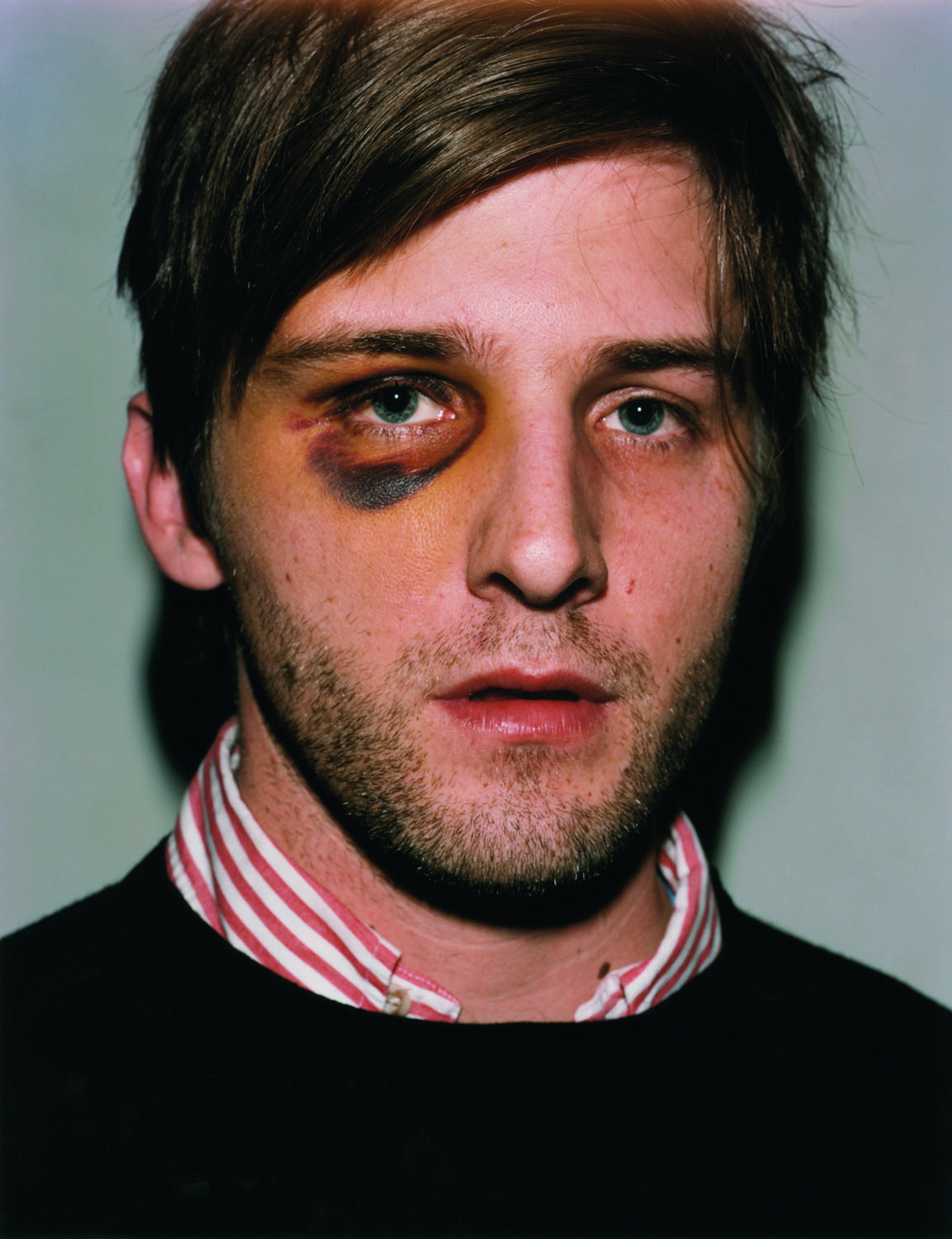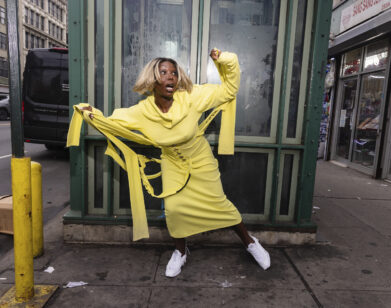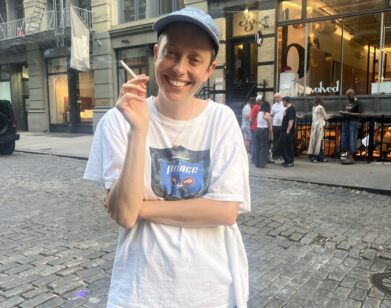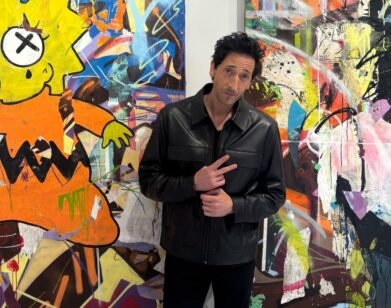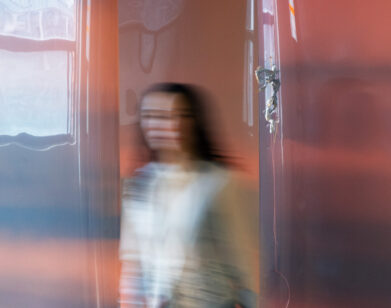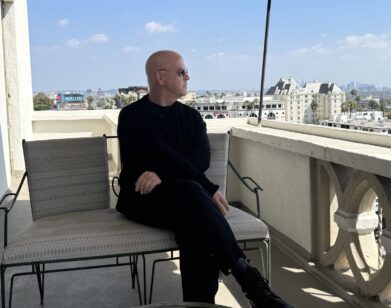Infinite Stories at the Lyon Biennale
Beginning with the title, “Meanwhile… Suddenly, And then,” visitors are to write their own stories at the 12th Lyon Biennale, the city-wide art exhibition founded by the the Lyon Museum of Contemporary Art’s director Thierry Raspail. Gunnar Kvaran, this year’s curator, designed the experience and selected artworks around the theme of narratives–a timely concept in a world of burgeoning digital media. Citing French critic and philosopher Roland Barthes’ observation of the “countless narratives in the world,” Kvaran envisions infinite stories mingling at Lyon.
Rather than combing the art world for the right artists, Kvaran, who has been working since 1983 and has been the director of Astrup Fearnley Museum in Oslo since 2001, initially chose among those he has encountered in his career. Three established artists, Yoko Ono, Erró, and Alain Robbe-Grillet, are among the first artists that sparked his curiosity and knowledge of the theme in art. Robert Gober, Jeff Koons, Matthew Barney, Fabrice Hyber, Tom Sachs, and Paul Chan are artists Kvaran has worked with in his last 15 years as a curator. Many of the younger artists involved, such as Ed Atkins, Nate Lowman, Helen Marten, and James Richards, approached Kvaran with their work.
To thicken the plot, Kvaran opted for works that tell “new stories differently.” New York-based artist Ian Cheng, for instance, created an action movie titled Entropy Wrangler (2013), in which computer software generates a never-ending plot with pre-shot scenes—a very different approach to the beginning, middle, and end structure of traditional video art.
Discovering the Biennale within the city will be another adventure. Works are spread out in the Museum of Contemporary Art and the Bullukian Foundatiuon, as well as La Sucrière, a former sugar factory, La Chaufferie de l’Antiquaille, the former boiler room of a hospital, and the Saint-Just Church. Taking into consideration how integrated the Biennale has historically been with Lyon, Kvaran arranged for private homes and apartments to also become show spaces.
The Biennale opens Thursday, September 12 and goes through January 5, 2014. Separate weekends will be dedicated to performance, video, and robotics as they relate to narratives, and a colloquium called “The world is made of stories” will be held on November 22.
We spoke with Kvaran in Oslo, over Skype, about his vision.
RACHEL SMALL: Thierry Raspail gave you the word “transmission” to start with. How did you counter with the theme of narrative?
GUNNAR KVARAN: I immediately thought about narratives, which has quite a lot to do with art in general. It’s very much about also finding forms to express them. So, I answered Thierry that I would like to work on the notion of narrative art in the context of contemporary art. I would to look for different kinds of formalizations; that is, how, or in what way, we could find different kinds of narrative structures within contemporary art. I also thought that a Biennale should be about contemporary art, because I come from a museum and we always have these historical contexts. I thought the Biennale should be a great, large-scale opportunity to see and to compare what different artists are doing in different parts of the world with the theme. I was aware that there were quite a lot of artists telling us some kind of stories in contemporary art. (I’m not saying that this is a dominant trend.) But not all of them are preoccupied with inventing or questioning the way of formalizing these narratives. The Biennale is more about artists telling me some kind of stories, and proposing new ways of doing it.
SMALL: Can you talk about how you selected the artists?
KVARAN: I wanted to find a narrative structure for the exhibition. I thought it would be interesting to speak in the first person and have a certain kind of parallel between my experience and my history within the bigger history of art. So I proposed Yoko Ono, Erró, and Alain Robbe-Grillet. These would be the filmmaker, the moving image artist, and the conceptual artist. All these artists have been dealing with narratives and have been doing that for many, many years. Then I thought it would be interesting to look at the artists who I think have really revealed new types of structures, also artists that I have had the privilege and the pleasure to work with in the last 15 years, like Matthew Barney, Jeff Koons, and Paul Chan. These 10 artists are a metaphor for the greater history of art. Then, of course, my big interest was to look at young artists. There are about 50 artists coming from different continents of the world, and they are all showing us some kind of visual narratives and questioning ways of how one can present and formalize storytelling in visual art. What you will experience in the show a constellation of individual artists. The only thing that they have in common is that they are telling us some kind of stories. They have very different cultural backgrounds and they have very different intentions with their storytelling. But attached to this is the major criterion of my selection: these artists had to have a certain kind of new approach—they had to at least be preoccupied in the formalization of telling a story, constructing it in certain form or way.
SMALL: Why do you think stories are important to people, specifically in art?
KVARAN: Artists have their existential questions as human beings, and they address these questions in their works. But they are also thinking in a broader sense when they participate in a social and political debate through their works. Often the most important voices of artists in the political and the social debate are focused on originality in their works. We can see this in historical pieces, like “Guernica” by Picasso. “Guernica” was an extremely important manifestation and critique against war, but it was important and powerful because it was also an incredibly original and powerful work of art.
SMALL: When people look at this art, will they be creating their own narratives?
KVARAN: I think that is totally normal. There are two sides of the work: the intention of the artist—that can be more or less clear to the public—but then of course we have the viewer, the one who is reading and understanding and experiencing the work of art. For example, we are showing a selection of Robert Goper’s dollhouses. He is installing the dollhouses as a new, more precise story that narrates the genesis of him becoming an artist, so this work is personal. But at the same time, people can understand the work on a very personal level—the dollhouse, the house, the family, the sexuality, the social conventions and the limits—they bring a common thing to our social awareness.
SMALL: It seems there could be almost infinite threads drawn in peoples’ minds.
KVARAN: Absolutely. I hope hundreds of thousands of people will go through the exhibitions and they will all come up with different kinds of understandings, and they will talk and they will communicate and there will probably be different kinds of views and understanding of the narratives happening during the exhibition. But I don’t want people to only think about the stories, because all the forms are dependent on the originality of how they are formalized.
SMALL: Does the form determine how you experience it?
KVARAN: I think in a way it can. There’s no such thing as a pure, invisible narratives that you just fits in your head. It can be literary, or can be filmic, or can be a visual installation.
SMALL: How did you come up with the title?
KVARAN: We pulled Roe Ethridge’s images together at the beginning with the possibility of dispersing them in the cityscape during the Biennale. There would be this image here, another one there, so the people who would experience the narrative of Roe Ethridge in the space. And I thought “Why not do a similar thing with the title?” That’s why the title is three titles in one title. The title is not supposed to give you a certain kind of clue or preconceived idea of what the Biennale is about—it’s also a process. The title triggers a narrative more than [being] a narrative itself.
SMALL: Are you supposed to fill in the blanks?
KVARAN: Yeah. There’s a certain kind of story being told, but you are active in the process of producing meaning.
SMALL: Is there anything static about the narratives? Or is it totally subjective?
KVARAN: I think we are absolutely in the middle of subjective storytelling. It’s about politics, it’s about publicity, it’s about art, it’s about art history, it’s about artworks. There are so many stories being told and being produced. There is no truth, really, in any of these. They are only propositions somewhere. It’s up to you and me, to everyone. At a later stage, there becomes a certain kind of consensus of what this work is about. But at a certain kind of stage, there’s a lot of possibilities, and openness to the narrative. I think that of course the artist has some kind of intention. But in the work itself, in literature, or in theater, or in filmmaking, there is a certain kind of process that takes place, and even with things and intentions you begin with, they can change during the process of producing and inventing the work.
SMALL: Art can illuminate aspects of society. How do you think narratives in our society can influence people?
KVARAN: These artists all have some kind of message to the public. These messages can be quite personal, maybe about their own existential situation, and it can be about suffering, it can be about questioning of one’s existence and so on. They are all telling us very genuine stories, which are touching us in different ways and they are enlightening in different ways. But again, it’s not only the stories themselves, but it’s how it is done—that creates the impact of the story. It is not what is said but how it is said. I don’t think you can dissociate the content from the form.
SMALL: There is so much new media that communicates the outside world to us in new ways, too. Through them, we’re interpreting so much of the world we’re not experiencing firsthand, and they are shaping our worldview. Can you speak about that?
KVARAN: There’s two elements to it: it’s about the technology, and how this can help us produce these kinds of new narratives. Then it is about the social impact of these media and how the world is now composed of an infinite number of narratives. If we look at Europe 50 years ago, there was maybe one state television in the country, and maybe one state radio. Now we are at the time when nearly each and every one of us is like a radio, is like a television. It is like the whole world is breathing out and in all the time, and we are producing and receiving images and meaningful things continuously. This produces a new kind of comprehension, a new kind of understanding of reality, which is not one thing, but which is extremely fragmented and complex. It is also extremely temporary because things disappear and the new things come. The duration is also different from yesterday. There’s a shift of these young artists who have been brought up, educated, with these media around them. If you have a question, if you have a doubt, you go to the Internet, for example. And you will get thousands of answers to your questions. All of this will proliferate more kinds of questions and more kinds of answers. There are about 10 artists in the Biennale who definitely are quite influenced by these kinds of new realities, and they are dealing with this in a very different kind of way.
SMALL: What do you want people to leave the Biennale thinking?
KVARAN: People will experience all these kinds of narratives, and they will have different kinds of opinions and they will find different kinds of truths. I hope nobody leaves with one storyline.
THE LYON BIENNALE OPENS TOMORROW, SEPTEMBER 12, AND RUNS THROUGH JANUARY 4, 2014.

